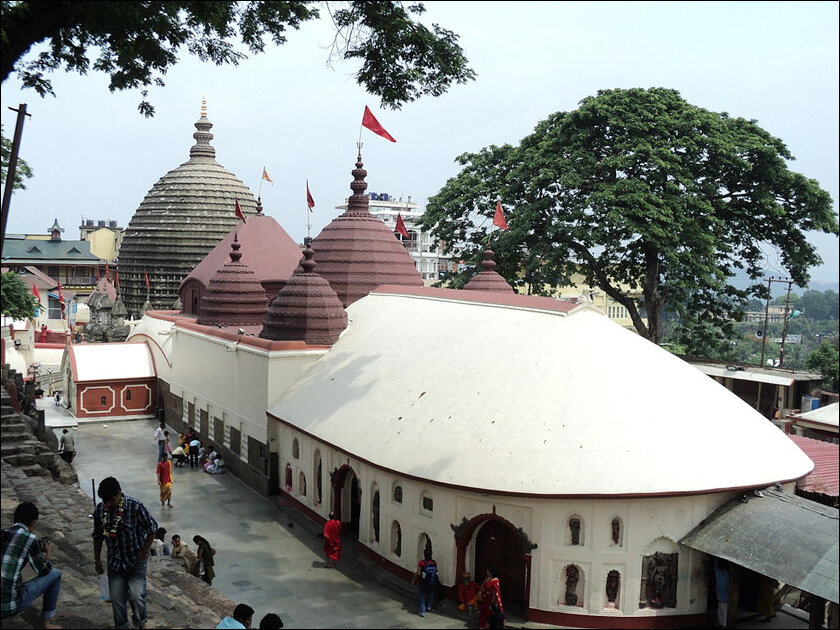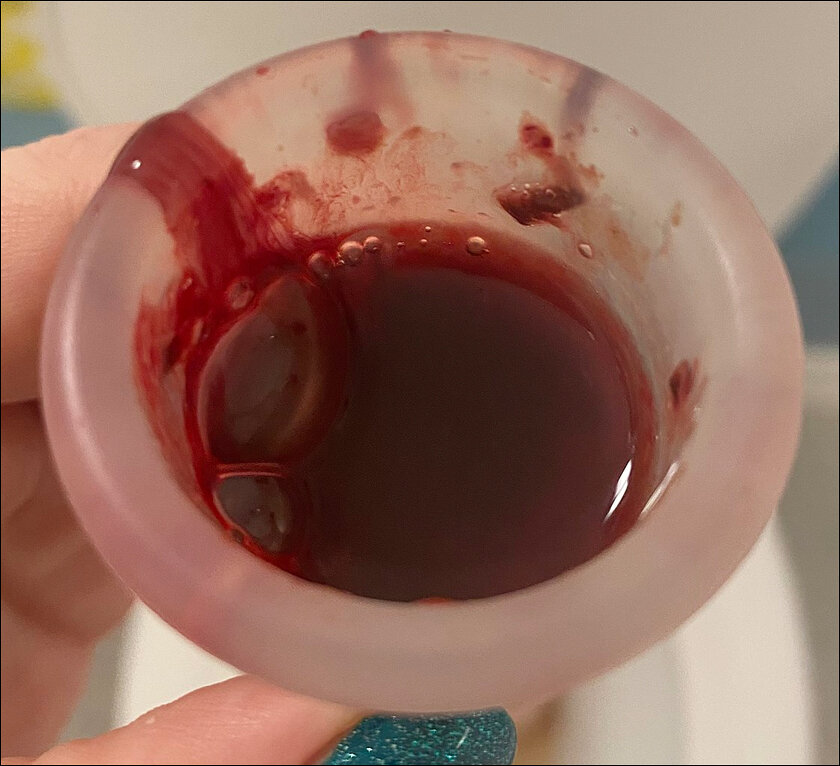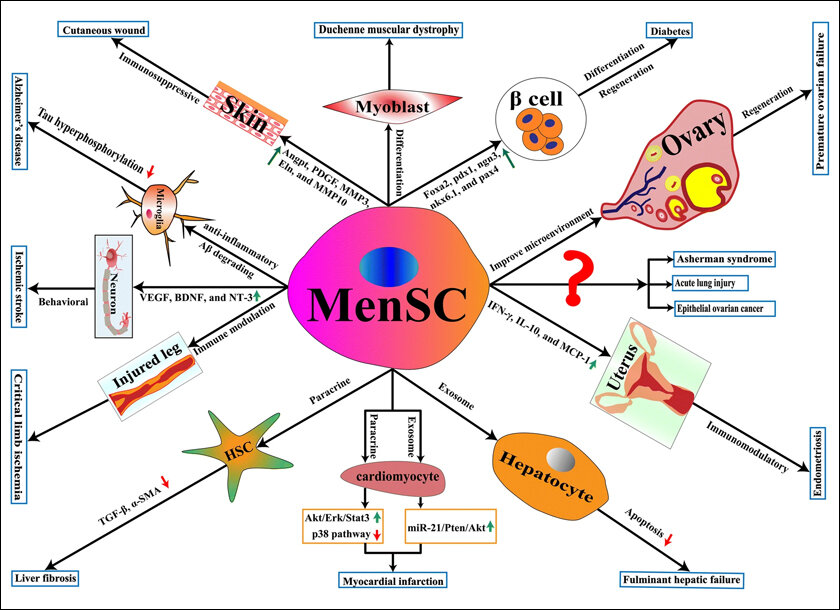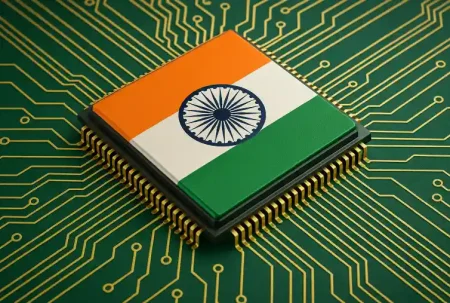Usually looked down upon, scientists have discovered unique, magical uses of menstrual blood writes Satyen K. Bordoloi and why science cannot have enough of it.
The recently concluded Ambubashi mela of Goddess Kamakhya in Assam, is one of the most unique religious festivals. It is held to celebrate the period of the goddess. The temple and its vicinity become a sea of red as Hindus worldwide congregate. It is unique as it is perhaps the only religious festival that brings attention to menstruation – something usually looked down upon and hidden in most cultures. This ancient festival was ahead of its time because it turns out menstrual blood could be the secret to curing most human diseases.

The Magic Inside Our Bodies
Human bodies are magical, and so are their various processes – be it birth, regeneration, repair or sustenance. A key ingredient responsible for each of these processes is stem cells. These are the master cells of the body as they can develop into any type of cells, becoming the building blocks of all organs, tissues, blood and the immune system. In many tissues they serve as an internal repair system, regenerating to replace lost or damaged cells across the life of a person.
Artificially injected stem cells could be used to repair damaged heart muscles to prevent heart failure. It could be used to repair damaged brain tissues helping people improve recovery from stroke. It could even be used to make insulin-producing cells, which could help treat diabetes. And they could be used to repair damaged spinal cord tissue, helping restore movement and sensation.
Some of the professed cures are so unbelievable, they sound magical. One researcher told me of an urban legend about an exasperated doctor inserting stem cells into the eye of a person going blind as a last resort because nothing else had cured them. Allegedly, the sight of the individual was restored.
Those doing research in the field of regenerative medicine are trying to create organs using stem cells. This could be a viable treatment for people with organ failure.
Stem cells can also be used to screen new drugs for safety and effectiveness, and help identify new treatments for incurable diseases. In basic research, it can help scientists understand how the body develops and how diseases progress. This knowledge could lead to new ways to prevent and treat diseases and thus revolutionise diseases and life as we know it.
But it is not easy to extract stem cells. The easiest to extract and the best – though comparatively rarer in the world – are embryonic stem cells (ESCs).

(Image Credit: Wikipedia)
The Roadblock
Despite its enormous potential benefits, stem cell research has run into a key ethical concern. It has mainly to do with where the stem cells are procured from. ESCs are found in the inner cell mass of a blastocyst – an early-stage pre-implantation embryo. ESCs are the best form of stem cells as they are pluripotent, which means they can differentiate into any of the 220 cell types in the human body.
The problem is human embryos reach the blastocyst stage 4–5 days post fertilization, at which time they consist of 50–150 cells. Isolating the inner cell mass (embryoblast) using immunosurgery causes the destruction of the blastocyst. This raises ethical issues: should this embryo at the pre-implantation stage be given the same moral considerations as embryos in the post-implantation stage of development?
Thus, the Christian pro-life movement and some religious traditions worldwide have a problem with the destruction of embryos for stem cells. To them, this is the destruction of life.
This is where menstrual blood comes in.

The Magic Inside Women on Periods
Though stem cells are found in all tissues of the body, they are most concentrated in the bone marrow, umbilical cord blood, and menstrual blood. Among these, menstrual blood has the most potential for two reasons: they are plentiful and they, like ESCs, are pluripotent. These cells – called menstrual blood-derived stem cells (MenSCs) – can be harvested from human menstrual blood-shedding i.e. period blood that most women shed monthly. Like the ESCs, they have a high rate of proliferation and possess the power to develop into multiple other cells.
Thus, almost anywhere that the ESCs can be used, MenSCs can also be used i.e. it can be used to treat a whole host of conditions, including a potential treatment for cancer.

(Image Credit: Stem Cell Research & Therapy)
Benefits of Extracting Stem Cells from Menstrual Blood
The most crucial benefit is obvious: its source is abundant. Every woman going through her menstrual cycle can donate her menstrual blood for MenSCs to be extracted from them. Also, menstrual blood is a rich source of MenSCs i.e. a large number of stem cells can be extracted from a small amount of blood. Most important of all, unlike ESCs, MenSCs do not raise ethical concerns even in those deeply religious.
Unlike stem cells extracted from the bone marrow, the extraction of MenSCs from menstrual blood is a non-invasive procedure that requires no surgery or other invasive devices. There is no pain or danger anyone is put through because of this.
As research into stem cells advances, the world will need more period blood. Societal stigma, sadly, could hamper this. But when the word spreads about the cures that are developed, and how they are saving lives, perhaps two things will happen. Women will be inspired to donate period blood. And more importantly, especially in South Asia – society will shed an ancient revulsion to one of the most beautiful gifts of nature.
Goddess Kamakhya would agree.
In case you missed:
- Reversing Heart Disease: Next Step in Living 150 Years Achieved in Lab
- Copy Of A Copy: Content Generated By AI, Threat To AI Itself
- When AI Meets Metal: How the Marriage of AI & Robotics Will Change the World
- Quantum Leaps in Science: AI as the Assembly Line of Discovery
- AI Hallucinations Are a Lie; Here’s What Really Happens Inside ChatGPT
- Would an Electric Plane Have Reduced the Air India Crash Death Toll?
- A Data Centre on the Moon – From Sci-Fi to Necessity
- Tears of War: Science says women’s crying disarm aggressive men
- Rethinking AI Research: Shifting Focus Towards Human-Level Intelligence
- A Howl Heard Worldwide: Scientific Debate Roars Over an Extinct Wolf’s Return









